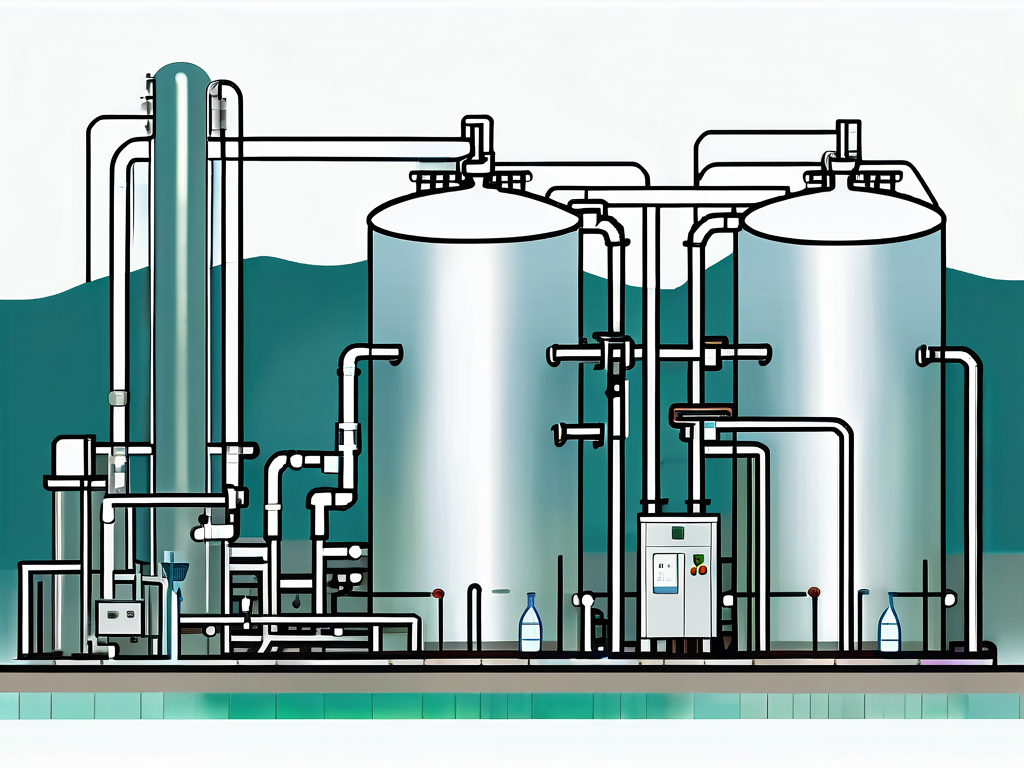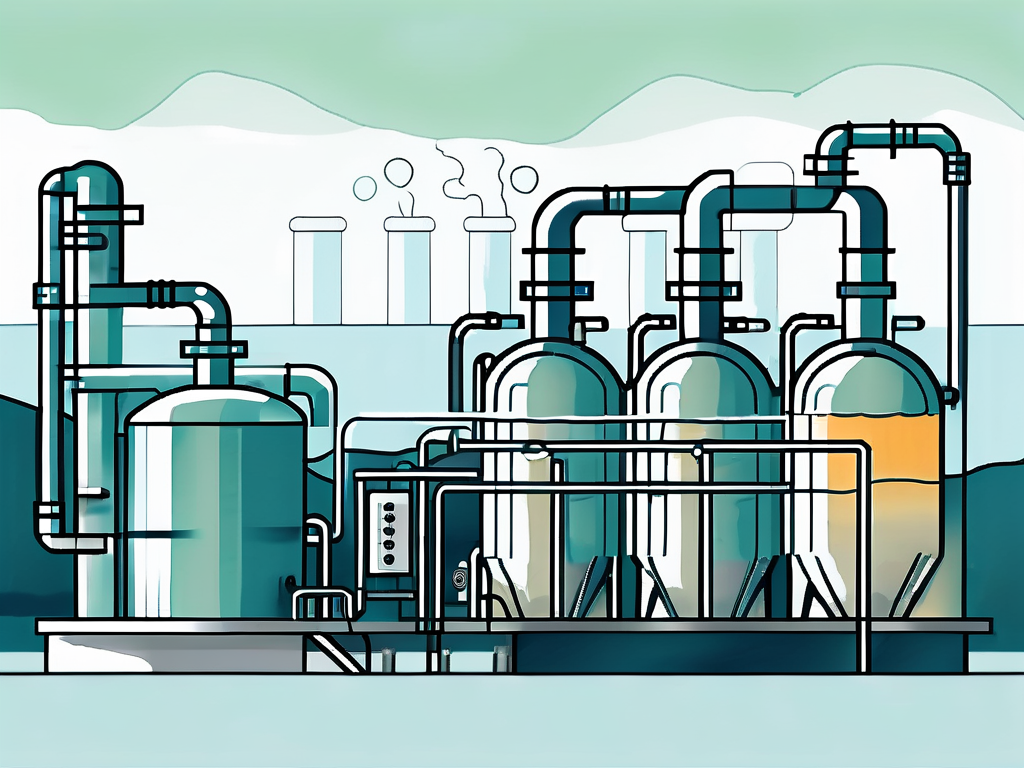
Mixed Liquor: Wastewater Treatment Explained
In the realm of wastewater treatment, 'Mixed Liquor' is a term that carries significant weight. It refers to a mixture of activated sludge and water that is used in the secondary treatment process of wastewater management. This article will delve into the intricacies of mixed liquor, its role in wastewater treatment, and the scientific principles that govern its use.
Wastewater treatment is a complex process that involves multiple stages, each with its unique set of procedures and terminologies. One such term that often crops up in discussions about wastewater treatment is 'Mixed Liquor'. This term may seem somewhat enigmatic to those unfamiliar with the field, but it is a fundamental component of the wastewater treatment process.
Understanding Mixed Liquor
The term 'Mixed Liquor' refers to a specific mixture used in the secondary treatment process of wastewater management. It is a blend of activated sludge and water that has been subjected to primary treatment. The primary treatment process involves the removal of large solids and grit from the wastewater. The resulting water, which still contains dissolved and suspended organic matter, is then mixed with activated sludge to form Mixed Liquor.
The activated sludge in the Mixed Liquor serves a crucial role. It is a concentrated mixture of microorganisms that feed on the organic matter in the wastewater. These microorganisms, often referred to as 'biomass', are responsible for breaking down the organic matter in the wastewater, thus purifying it.
Composition of Mixed Liquor
The composition of Mixed Liquor is a critical factor in the wastewater treatment process. The primary constituents of Mixed Liquor are water from the primary treatment process and activated sludge. However, the specific composition can vary depending on the nature of the wastewater and the specific treatment process being used.
The activated sludge in the Mixed Liquor is a complex mixture of different types of microorganisms. These include bacteria, fungi, protozoa, and metazoans. Each of these organisms plays a specific role in the breakdown of organic matter in the wastewater.
Role of Mixed Liquor in Wastewater Treatment
Mixed Liquor plays a pivotal role in the secondary treatment of wastewater. The activated sludge in the Mixed Liquor acts as a biological catalyst, facilitating the breakdown of organic matter in the wastewater. This process, known as biological treatment or secondary treatment, is a key step in the wastewater treatment process.
The effectiveness of the Mixed Liquor in treating wastewater is largely dependent on the concentration of microorganisms in the activated sludge. A higher concentration of microorganisms typically results in more efficient breakdown of organic matter. However, the specific concentration required can vary depending on the nature of the wastewater and the specific treatment process being used.
Process of Mixed Liquor Formation
The formation of Mixed Liquor is a critical step in the wastewater treatment process. It involves the mixing of activated sludge with water that has undergone primary treatment. The resulting mixture, known as Mixed Liquor, is then subjected to secondary treatment.

The process of forming Mixed Liquor begins with the primary treatment of wastewater. This involves the removal of large solids and grit from the wastewater. The resulting water, which still contains dissolved and suspended organic matter, is then mixed with activated sludge to form the Mixed Liquor.
Primary Treatment
Primary treatment is the first step in the wastewater treatment process. It involves the removal of large solids and grit from the wastewater. This is typically achieved through the use of physical processes such as screening and sedimentation.
The primary treatment process is designed to remove large solids and grit that could potentially damage the equipment used in subsequent stages of the treatment process. However, it does not remove dissolved and suspended organic matter from the wastewater. This is where the secondary treatment process, and specifically the use of Mixed Liquor, comes into play.
Secondary Treatment
Secondary treatment is the next step in the wastewater treatment process. It involves the use of biological processes to remove dissolved and suspended organic matter from the wastewater. The key component of the secondary treatment process is the Mixed Liquor.
The Mixed Liquor is introduced into an aeration tank, where it is mixed with air. The microorganisms in the activated sludge feed on the organic matter in the wastewater, breaking it down into simpler substances. This process, known as biological treatment, is a key step in the wastewater treatment process.
Significance of Mixed Liquor in Wastewater Treatment
The significance of Mixed Liquor in wastewater treatment cannot be overstated. It is a key component of the secondary treatment process, facilitating the breakdown of organic matter in the wastewater. Without the use of Mixed Liquor, the wastewater treatment process would be significantly less effective.

The activated sludge in the Mixed Liquor acts as a biological catalyst, speeding up the breakdown of organic matter in the wastewater. This makes the secondary treatment process more efficient, resulting in cleaner wastewater that can be safely discharged into the environment.
Environmental Impact
The use of Mixed Liquor in wastewater treatment has a significant positive impact on the environment. By facilitating the breakdown of organic matter in wastewater, it helps to prevent the release of harmful substances into the environment.
Furthermore, the microorganisms in the activated sludge can also break down harmful substances such as nitrogen and phosphorus, which can cause eutrophication if released into bodies of water. This further enhances the environmental benefits of using Mixed Liquor in wastewater treatment.
Efficiency of Treatment
The use of Mixed Liquor in wastewater treatment significantly enhances the efficiency of the treatment process. The activated sludge in the Mixed Liquor acts as a biological catalyst, speeding up the breakdown of organic matter in the wastewater.
This makes the secondary treatment process more efficient, resulting in cleaner wastewater that can be safely discharged into the environment. Furthermore, the use of Mixed Liquor also reduces the amount of sludge that needs to be disposed of at the end of the treatment process, further enhancing the efficiency of the process.
Challenges in Using Mixed Liquor
While the use of Mixed Liquor in wastewater treatment offers numerous benefits, it also presents certain challenges. These include maintaining the right balance of microorganisms in the activated sludge, managing the production of excess sludge, and dealing with the potential release of harmful gases during the treatment process.
Despite these challenges, the use of Mixed Liquor remains a cornerstone of the wastewater treatment process. With ongoing research and technological advancements, it is expected that these challenges will be effectively addressed, further enhancing the efficiency and environmental benefits of using Mixed Liquor in wastewater treatment.
Maintaining Microorganism Balance
Maintaining the right balance of microorganisms in the activated sludge is a key challenge in using Mixed Liquor for wastewater treatment. The effectiveness of the treatment process is largely dependent on the concentration of microorganisms in the activated sludge. If the concentration is too low, the organic matter in the wastewater will not be effectively broken down. On the other hand, if the concentration is too high, it can lead to the production of excess sludge, which can be difficult to manage.
Furthermore, the specific types of microorganisms present in the activated sludge can also impact the effectiveness of the treatment process. Different types of microorganisms are effective at breaking down different types of organic matter. Therefore, the composition of the activated sludge needs to be carefully managed to ensure that it contains the right types of microorganisms for the specific wastewater being treated.
Managing Excess Sludge Production
Another challenge in using Mixed Liquor for wastewater treatment is managing the production of excess sludge. The microorganisms in the activated sludge multiply as they feed on the organic matter in the wastewater. This leads to the production of excess sludge, which needs to be removed from the system.
Managing the production and disposal of excess sludge can be a significant challenge. If not properly managed, the excess sludge can clog the system, reducing the efficiency of the treatment process. Furthermore, the disposal of excess sludge can also present environmental challenges, as it often contains harmful substances that need to be carefully managed to prevent environmental contamination.
Dealing with Harmful Gases
The use of Mixed Liquor in wastewater treatment can also lead to the production of harmful gases. As the microorganisms in the activated sludge break down the organic matter in the wastewater, they can produce gases such as methane and hydrogen sulfide. These gases can be harmful to both humans and the environment if not properly managed.
Therefore, systems need to be in place to capture and treat these gases before they are released into the atmosphere. This can add complexity to the wastewater treatment process, and requires careful management to ensure that the gases are effectively captured and treated.
Future of Mixed Liquor in Wastewater Treatment
Despite the challenges associated with using Mixed Liquor in wastewater treatment, it remains a cornerstone of the process. With ongoing research and technological advancements, it is expected that the efficiency and environmental benefits of using Mixed Liquor will continue to improve.
Future developments in the field are likely to focus on enhancing the efficiency of the treatment process, reducing the production of excess sludge, and improving the management of harmful gases. These advancements will further enhance the role of Mixed Liquor in wastewater treatment, ensuring that it remains a key component of the process for years to come.
Technological Advancements
Technological advancements are likely to play a key role in the future of Mixed Liquor in wastewater treatment. New technologies are being developed that can enhance the efficiency of the treatment process, reduce the production of excess sludge, and improve the management of harmful gases.
For example, new types of activated sludge are being developed that can break down organic matter more efficiently, reducing the amount of sludge that needs to be disposed of at the end of the process. Similarly, new technologies are being developed to capture and treat the harmful gases produced during the treatment process, reducing their impact on the environment.
Research and Development
Research and development will also play a crucial role in the future of Mixed Liquor in wastewater treatment. Scientists are continually studying the processes involved in wastewater treatment, seeking to better understand the role of Mixed Liquor and how it can be optimized.
For example, research is being conducted into the specific types of microorganisms present in activated sludge, and how they interact with different types of organic matter. This research could lead to the development of new types of activated sludge that are more effective at breaking down specific types of organic matter, further enhancing the efficiency of the treatment process.
Policy and Regulation
Policy and regulation will also play a key role in the future of Mixed Liquor in wastewater treatment. As the importance of wastewater treatment for environmental protection becomes increasingly recognized, it is likely that regulations governing the process will become more stringent.
This could lead to increased requirements for the use of Mixed Liquor in wastewater treatment, as well as stricter standards for the management of excess sludge and harmful gases. These changes could further enhance the role of Mixed Liquor in wastewater treatment, ensuring that it continues to play a key role in protecting the environment.



